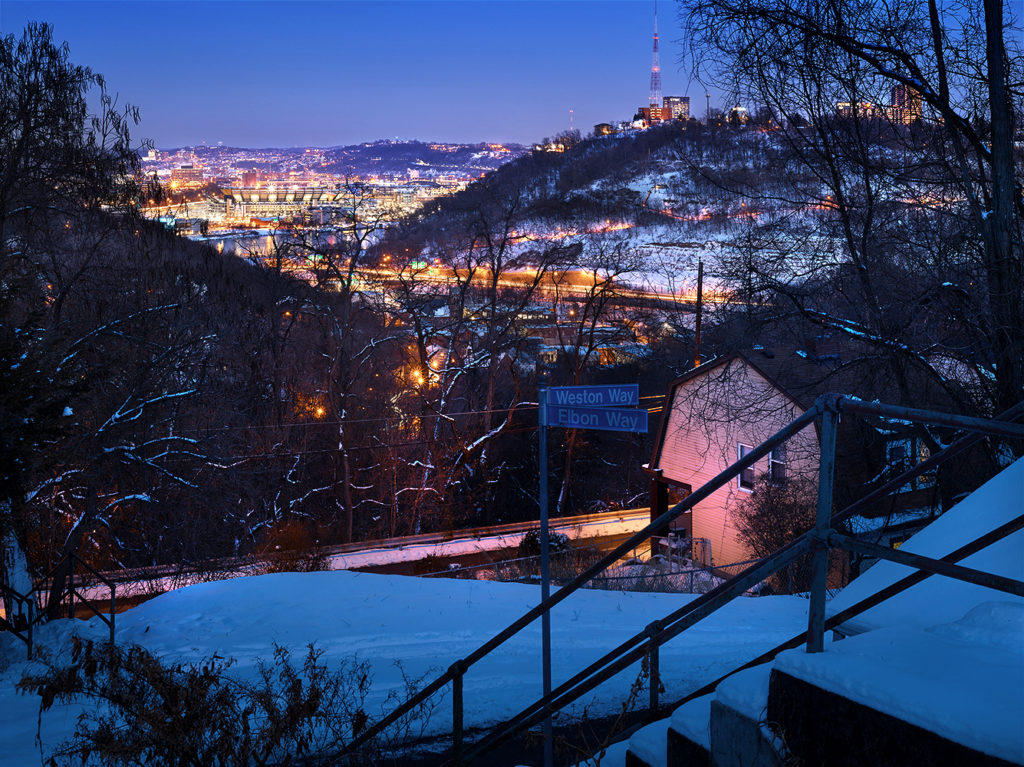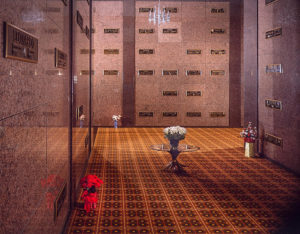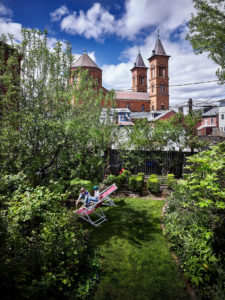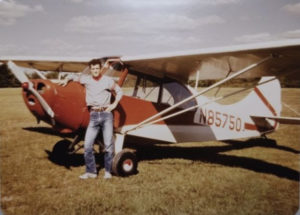
With Thanksgiving in the past and snow in the forecast, it’s time to prepare my practice for winter. What do colder temperatures and snow-powdered trees mean for an architectural photographer?
In the winter, limited daylight and freezing temperatures require extra-careful planning for me and my team, but the resulting shots are worth the effort.
Read on to explore the benefits of winter architectural photography.
Best,
Ed
P.S. Like any images you see in this newsletter? Order prints as gifts this holiday season by getting in touch through the link below.
Benefits of Winter Photography
1) New vistas and points of view
Naked branches that make way for new vistas are a particularly nice aspect of Pittsburgh winters. Below, Heinz Field, PNC Park, and Pittsburgh’s North Shore glow in the distance. See more from this series.

2) Cool blue skies and crisp lines
For the Gates Center, pictured below, I knew sweeping winter light would beautifully accent the building’s unique massing. The dynamic angles of the site are highlighted by the contrast between the snow-covered grounds and pedestrian paths that traverse the campus. Explore the project.

Architect: Mack Scogin Merrill Elam Architects
3) Glowing interiors
In the winter, cool and dark exteriors make for unique opportunities to capture interior lighting that highlights a building’s architecture from the outside. The winter is a great time to capture the relationship between the interior and exterior of your home. View more of this residence.

Architect: Strollo Architects
“As an architect I consider how design can acknowledge or heighten an individual’s awareness of seasonal change. Having the opportunity to work with Ed to photograph our work throughout the seasons has helped us capture and show our design thinking process to our clients.”
– Gerard Damiani, AIA, Studio d’ARC architects

Sota Construction Services, Inc. Headquarters Through the Seasons
studio d’ARC
Located just outside of Pittsburgh, the Sota Construction Services HQ is one-of-a-kind. The office is insulated with locally sourced straw bale and was designed to integrate into the surrounding landscape through the seasons.




